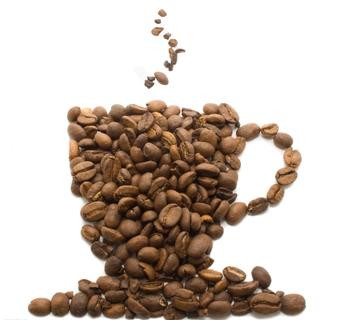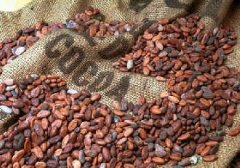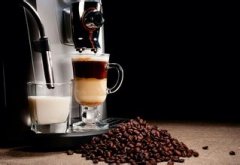Starbucks'"mysterious" Coffee menu

In theory, the more items on the menu, the better. However, in the petty bourgeois Starbucks coffee shop, there is a coffee that has not taken a place on the menu after decades. What is the secret of this "mysterious" coffee?
The coffee that is not listed on the menu
For restaurants in the catering business, menus are absolutely indispensable tools. Customers can have a comprehensive understanding of all the dishes and drinks that a store can offer by browsing the contents of the menu, and the higher-grade restaurants make the menu illustrated, so that customers can choose their favorite food at a glance.
In theory, the more items on the menu, the better. However, in the petty bourgeois Starbucks coffee shop, there is a coffee that has not taken a place on the menu after decades. What is the secret of this "mysterious" coffee?
What is the reason why this mini cappuccino is out of the menu? Starbucks' official explanation is that "there is no extra room on the menu", which is really surprising. Although in the eyes of ordinary people, whether the coffee is on the menu or not has little effect on them, economists have found a hidden mystery in it. You know, this mini cappuccino, which is not on the menu, is the key to Starbucks' way to make money.
Fully tap the potential of consumers
In fact, the 8-ounce cappuccino contains the same amount of espresso as the 12-ounce coffee listed on the menu, so a small cup of cappuccino with less water naturally has a stronger flavor. The World Barista Competition made it clear that a cappuccino tastes best at 5 to 6 ounces. However, the average customer always thinks that a small cup of coffee should be cheaper than a large one, regardless of the contents. At the same price of 8 ounces and 12 ounces, consumers always feel that they have lost money.
As customers have the mentality of "similar items, larger models must be more expensive and better", Starbucks is caught in a dilemma. If they want to launch this kind of small espresso and lower the price instead of raising the price, the profit of the coffee shop will be reduced and the loss will outweigh the gain; on the contrary, if the price of coffee is raised, it will lose a certain source of customs. this is what every business does not want to see.
For businesses, the best-case scenario is that those customers who have the spending power choose expensive goods without causing any waste of resources, while ordinary customers spend as much as they can afford. Starbucks' method of "watching people sell coffee" is to make the same coffee as profitable as possible without losing low-end customers.
As for how to judge whether a customer belongs to this category, it depends on the waiter's working experience for many years. Through careful observation, experienced waiters can easily judge whether guests can accept coffee with a strong, mellow taste, small capacity and high price. If you judge that the customer can accept it, then privately recommend the mini cappuccino, otherwise recommend the oversized cappuccino. In this way, Starbucks can easily get rid of the dilemma that price cuts will reduce marginal profits, while price increases will lose customers and make itself in an "invincible position".
Who could have imagined that a cup of coffee that is not on the menu should play such an important role? It is the common pursuit of all businesses to improve marginal profit in various ways. In this game between merchants and customers, do you know that you have been unwittingly tricked by others?
Excerpt from: this article [Le Shu net]
Important Notice :
前街咖啡 FrontStreet Coffee has moved to new addredd:
FrontStreet Coffee Address: 315,Donghua East Road,GuangZhou
Tel:020 38364473
- Prev

The tenderness of fancy coffee common sense of coffee
Cold wind raging winter, can not help but want to hold warm hot drinks in every moment, let the tired body and mind dissipate in the dense aroma, coffee is undoubtedly the most appropriate choice. Get up in the morning and drink a cup of coffee to wake up; a cup of coffee after busy work can refresh you; in your spare time, make an appointment with three or five friends, while the sun is warm, in an exotic coffee shop, listening to lazy jazz or
- Next

The relationship between GouBuLi and Coffee Coffee basic knowledge
Tianjin GouBuLi, a 155-year-old Chinese brand, has announced that it has made phased progress in negotiations with an American coffee giant, and a formal cooperation agreement is expected to be signed in the first half of this year. But the exact name of the coffee chain has not been announced. For this marriage, the industry is not optimistic, some netizens jokingly said while eating steamed buns while drinking coffee. In fact, personally, I think this acquisition should be
Related
- Beginners will see the "Coffee pull flower" guide!
- What is the difference between ice blog purified milk and ordinary milk coffee?
- Why is the Philippines the largest producer of crops in Liberia?
- For coffee extraction, should the fine powder be retained?
- How does extracted espresso fill pressed powder? How much strength does it take to press the powder?
- How to make jasmine cold extract coffee? Is the jasmine + latte good?
- Will this little toy really make the coffee taste better? How does Lily Drip affect coffee extraction?
- Will the action of slapping the filter cup also affect coffee extraction?
- What's the difference between powder-to-water ratio and powder-to-liquid ratio?
- What is the Ethiopian local species? What does it have to do with Heirloom native species?

